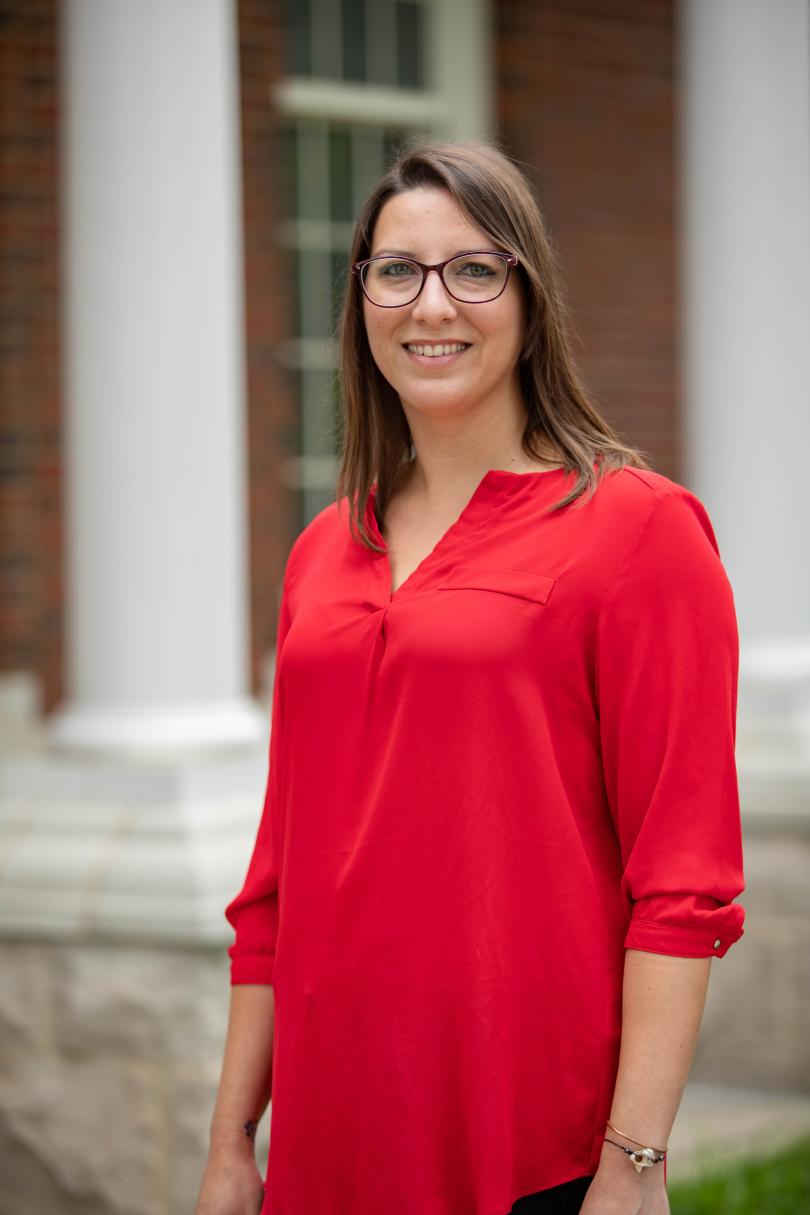By Richard LeComte

LEXINGTON, Ky. -- The portmanteau “DiaspoRicans” describes a demographic to which Karrieann Soto Vega belongs: people who come from or who trace their roots to Puerto Rico and don’t reside there. As part of her scholarship at the University of Kentucky, Soto Vega explores what it means to be part of Puerto Rico, especially in how artists and activists express their views on their relationship to the rest of the United States.
"I'm interested in part in popular culture and how activist rhetoric seeps into the work of reggaetón artists like Bad Bunny,” said Soto Vega, assistant professor of Writing, Rhetoric and Digital Studies in UK’s College of Arts & Sciences. “He is one example I've written about recently. He has continued to use his platform to speak Spanish and to speak about Puerto Rican realities.”
Soto Vega came to UK in 2018 after earning a doctorate in composition and cultural rhetoric at Syracuse University in New York. She’s affiliated with the Latin America, Caribbean and Latino Studies program at UK as well. Her background informs her understanding of the rhetoric DiaspoRicans use to describe their experiences.
"I look at what describes my identity and that of so many others,” she said. "I was born in Orlando, Florida, and I was raised in San Sebastiáan, Puerto Rico. And then I moved to New York City. My dad lived in New Jersey all my life, so I went to visit him back and forth every summer, every winter.” This back and forth is what describes the common DiaspoRican experience, which is also described as a vaivén, or a coming and going.
The focus of Soto Vega’s dissertation involved Lolita Lebrón, a Puerto Rican nationalist who moved to the mainland in the 1940s and who led an attack on the U.S. House of Representatives in 1954 in which she shot a gun eight times at the ceiling. She spent nearly 25 years in prison before President Jimmy Carter released her in 1979, after which she became something of a folk hero in the Puerto Rican independence movement. Lebrón died in 2010.
“In my dissertation, I did what we call a rhetorical history of Lolita Lebrón,” Soto Vega said. “I was looking at her life, what led her to the attack, what happened after in terms of her prison writing and the kinds of solidarities that she formed while in prison.”
Soto Vega in particular looked at what Lebrón said after the FBI killed Fioliberto Ojeda Rios, a 72-year-old activist, in his home in Puerto Rico and how her image and words are used today as quality-of-life and colonial issues arise in Puerto Rico.
"She said publicly to not engage in violence — we can protest and we can let our voices be heard— but violence is not the way,” Soto Vega said. “In her life she used what I'm calling a rhetoric of defiance in different kinds of ways. Puerto Ricans are commemorating her and using her image in different kinds of protests in Puerto Rico right now. It’s used in protests against austerity and the botched response about Hurricane Maria. That’s what I call the afterlives of anti-colonial dissent and how her kind of iconic image is used to fuel these movements.”
Because digital and cultural studies figure prominently in Soto Vega’s department, she continues to look at elements of Puerto Rican culture as expressed through music and the Web.
"After my dissertation, I’ve been looking at more contemporary struggles among the DiaspoRicans as well as their art and activism,” she said. “I’m looking at how art and activism are performed, but also how they appear in digital spaces. That’s why the digital studies component is so important.”
She also stresses how the story of Puerto Rico as a U.S. territory with commonwealth status fits in with the broader landscape of the post-colonial Caribbean and Hispanic world, including the cultures of indigenous Caribbean people and enslaved Africans in language, cuisine and music.
"We definitely hold a particular position in terms of the U.S. and Latin America, because we are Spanish speaking, and we share a long history of Latin American colonialism and exchange with the Caribbean islands as well,” she said. “These multiple histories have shown themselves in different kinds of cultural and linguistic practices.”
And speaking of music, Soto Vega is a big fan. She wrote a master’s thesis in Puerto Rico on the influence of rock music on English education in the territory, and she enjoys concerts as well as Bomba, a traditional dance and musical style of Puerto Rico. She particularly enjoys the interplay between the dancer and the main drummer, the primo, and the broader history of resistance the genre represents, even for those in the Puerto Rican diaspora
"There is a lot of music that we dance to, and one of them is Bomba,” she said. “If you ever get a chance to experience it, it’s wonderful, because it’s all drums.”
